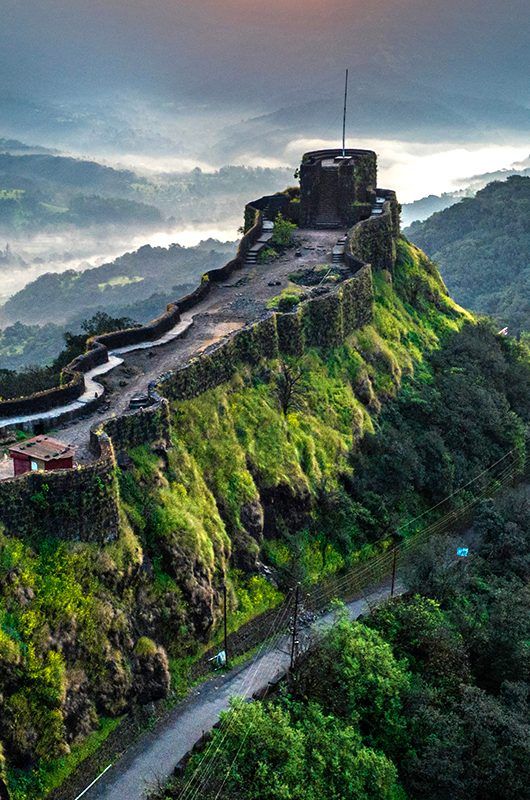Amazing Facts About Mahabaleshwar That Will Delight Every Traveler
Nestled in the Western Ghats of Maharashtra, Mahabaleshwar is one of India’s most beloved hill stations. Known for its lush greenery, refreshing climate, strawberry farms, and breathtaking viewpoints, Mahabaleshwar attracts tourists seeking both relaxation and adventure. Its cultural richness, colonial history, and natural landscapes make it a fascinating destination for travelers, students, and nature enthusiasts alike.
In this comprehensive guide, we explore Mahabaleshwar’s history, key facts, timeline, significance, FAQs, societal impact, observances, and inspirational insights—all presented in a human-friendly, engaging manner.
History of Mahabaleshwar
Mahabaleshwar’s story is intertwined with ancient legends, colonial development, and agricultural significance:
Ancient Roots: Mahabaleshwar has been referenced in local Puranas and ancient texts for its sacred temples, especially the Mahabaleshwar Temple, dedicated to Lord Shiva. The region was historically known for its strategic location and fertile land.
Colonial Era: During British rule, Mahabaleshwar was developed as a summer retreat. The British admired its temperate climate and scenic landscapes, establishing bungalows, churches, and recreational facilities.
Educational Significance: Over time, boarding schools and educational institutions were set up, attracting students from across India.
Tourism Development: The 20th century saw Mahabaleshwar evolve into a tourist hub with viewpoints, markets, and strawberry farms gaining popularity.
Key Facts About Mahabaleshwar
Panoramic Viewpoints: Locations like Arthur’s Seat, Wilson Point, and Elephant’s Head Point offer unparalleled vistas of valleys and rivers.
Strawberry Capital: Mahabaleshwar is famous for strawberry cultivation, with farms offering fresh produce and agro-tourism experiences.
Venna Lake: A scenic lake for boating, picnics, and local food experiences.
Pleasant Climate: Cool temperatures year-round make it ideal for summer retreats.
Colonial Architecture: British-era bungalows, churches, and schools reflect the town’s historical charm.
Adventure Activities: Trekking, horse riding, and nature walks are popular for tourists.
Cultural Festivals: Local fairs and temple festivals highlight regional traditions.
Agricultural Hub: Apart from strawberries, Mahabaleshwar produces vegetables and fruits that contribute to the local economy.
Religious Significance: The Mahabaleshwar Temple and nearby Panchganga Temple attract devotees.
Educational Institutions: Reputed boarding schools contribute to the town’s reputation as a center of learning.
Timeline of Mahabaleshwar
Ancient Era: Sacred temples and settlements established; region known for fertile soil and strategic importance.
British Colonial Period (19th Century): Development as a summer retreat; construction of colonial buildings and recreational facilities.
Early 20th Century: Rise of educational institutions and local markets.
Late 20th Century: Tourism growth, strawberry cultivation, and eco-tourism initiatives.
21st Century: Sustainable tourism, cultural preservation, and modern infrastructure development continue.
Significance of Mahabaleshwar
Tourism Significance: Attracts nature lovers, students, and domestic and international travelers, boosting the local economy.
Cultural Importance: Festivals, temples, and colonial heritage preserve regional traditions.
Ecological Significance: Hill station ecosystems contribute to biodiversity conservation.
Educational Influence: Schools and institutions provide quality education, shaping future generations.
Economic Impact: Tourism, agriculture, and hospitality generate employment and promote entrepreneurship.
Daily Life Impacts
Employment Opportunities: Tourism, hospitality, agriculture, and education sectors provide significant livelihoods.
Urban Development: Roads, healthcare, schools, and markets enhance residents’ quality of life.
Community Engagement: Festivals, fairs, and local events promote social cohesion.
Environmental Awareness: Conservation of viewpoints, forests, and water resources impacts daily life.
Cultural Preservation: Local traditions, temple rituals, and historical awareness enrich the community.
Observance and Important Points
Respect Nature: Avoid littering at viewpoints, lakes, and trekking trails.
Cultural Etiquette: Dress modestly in temples and traditional areas.
Support Local Economy: Buy strawberries, handicrafts, and souvenirs from local vendors.
Eco-Friendly Practices: Minimize plastic use, conserve water, and follow sustainable tourism principles.
Participate in Local Festivals: Engage in temple festivals and cultural fairs to understand the community.
FAQs About Mahabaleshwar
Q1: When is the best time to visit Mahabaleshwar?
A: October to June is ideal for sightseeing, trekking, and strawberry picking.
Q2: How do I reach Mahabaleshwar?
A: The hill station is accessible via Pune (120 km) and Mumbai (230 km) by road. Nearby railway stations and bus services also connect it to major cities.
Q3: What are must-visit attractions?
A: Arthur’s Seat, Venna Lake, Mapro Garden, Wilson Point, Pratapgad Fort, and strawberry farms.
Q4: Is Mahabaleshwar suitable for families?
A: Yes, with safe trekking trails, boating, open spaces, and family-friendly hotels and restaurants.
Q5: How many days are recommended for exploring Mahabaleshwar?
A: A 2–4 day trip is recommended to enjoy nature, viewpoints, adventure activities, and local culture.
Social and Cultural Significance
Heritage Preservation: Colonial architecture, temples, and natural landscapes are maintained for future generations.
Community Engagement: Locals, students, and tourists participate in cultural and environmental activities.
Environmental Awareness: Eco-tourism programs educate visitors and residents on sustainable practices.
Cultural Exchange: Interaction between tourists and locals fosters appreciation of diverse cultures.
Educational Influence: Schools and workshops provide knowledge about history, agriculture, and environmental sustainability.
Wishing and Inspirational Perspective
Mahabaleshwar inspires both travelers and residents:
Peace and Reflection: Serene valleys, misty hills, and tranquil lakes encourage mindfulness.
Creativity and Exploration: Landscapes, colonial architecture, and local culture inspire artists, writers, and photographers.
Healthy Lifestyle: Trekking, fresh produce, and outdoor activities promote wellness.
Community Connection: Participation in festivals and fairs fosters social harmony.
Environmental Respect: Observing eco-friendly practices encourages responsibility toward nature.
Conclusion: Importance in Daily Life and Society
Mahabaleshwar is more than a scenic hill station; it is a blend of nature, culture, education, and heritage. Its impact on daily life includes employment, educational opportunities, tourism-driven income, and environmental awareness. Socially, it fosters community engagement, cultural preservation, and intercultural understanding.
The 10 amazing facts about Mahabaleshwar highlight why this hill station continues to captivate travelers. From lush valleys and panoramic viewpoints to colonial charm and strawberry farms, Mahabaleshwar represents the harmonious coexistence of natural beauty, historical legacy, and human experience. By respecting its heritage and natural environment, visitors contribute to sustainable tourism, societal growth, and meaningful cultural exchange.








